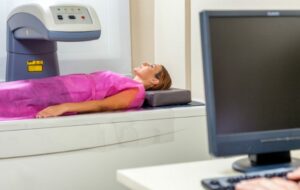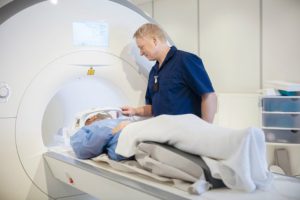OPG & Lateral Cephalogram: A Closer Look
At Vision XRAY, we offer a wide variety of radiological services for patients. To diagnose and treat conditions, we use examinations that assess bones, muscles, organs, nerves, and more.

OPG & Lateral Cephalogram: A Closer Look
At Vision XRAY, we offer a wide variety of radiological services for patients. To diagnose and treat conditions, we use examinations that assess bones, muscles, organs, nerves, and more. We utilise equipment that can focus solely on the limbs, torso, head, and even on the teeth. In fact, dental imaging is a frequently used service here at Vision XRAY. At Vision XRAY we offer a full range of dental imaging services including CT cone beam, CT Dental scan, OPG, TMJ X-ray and Lateral Cephalogram. Two of our frequently used procedures for dental imaging include the OPG and the lateral Cephalogram. Today, we take a closer look at what these two examinations are all about.
OPG (Orthopantomogram)
An OPG can be an extremely useful diagnostic tool for dentists, oral surgeons, orthodontists, and other physicians who work with the teeth, mouth, and jaw. The OPG delivers a wide image of the patient’s jaw region on a single film. Essentially, this is a panoramic x-ray of the jaw and teeth which encompasses the front and sides.
Such a x-ray may be needed at various points in your life. If you’re experiencing jaw tension, popping, or frequent headaches, your practitioner may want to assess you for disfunction of the temporomandibular joint (TMJ). This condition causes many people to inadvertently grind their teeth and experience pain. Using the OPG, the radiologist and practitioner can note problems or misalignment with the joint. They may also be able to see evidence of teeth grinding.
The OPG is frequently used in patients of all ages, younger patients or those entering orthodontic services, older patients or those looking for tooth decay or prior to tooth implantation. The panoramic image is ideal for showcasing the position of the teeth, the relation to the sinus and nerve and for those teeth that have emerged to the surface and those that are still under the gum line. This can help your physician prepare and plan for the best mode of treatment. The OPG is also commonly used to determine whether wisdom teeth are present in a patient, and can assist in preparation for an extraction.
What to Expect With an OPG
An appointment for an OPG should not take more than 15-20 minutes. You will need to remove jewellery or metallic objects from head and neck. The patient stands near the machine and places their chin onto a chin rest. To steady your jaw, your radiographer will ask you to bite down on a small plastic portion. The x-ray mechanism of the OPG machine rotates around the jaw, creating the panoramic image. The patient will be asked to stand still while the images are obtained. The x-ray itself takes only takes seconds.
Lateral Cephalogram
Another useful assessment tool in dental imaging is the lateral cephalogram. This is an x-ray which generates a side view of the head that can provide important information about the teeth and jaw. The lateral cephalogram shows facial structure, bone, and soft tissue. Your radiologist or dental practitioner can use these images to study the relation of your teeth to your jaw, assess problems in alignment or growth patterns, and prepare treatment.
The lateral cephalogram is best for observing jaw alignment. If you have an overbite or underbite, for example, these images will provide better detail and allow your practitioner to develop the best approach for your needs. This x-ray is commonly used in children to predict growth patterns in the teeth and jaws. The lateral cephalogram is used with adults as well, to study changes made from treatment or track other issues.
If you are working with an orthodontist, the lateral cephalogram may be ordered alongside the OPG. This x-ray is useful in tracking the progress of treatment.
What to Expect With a Lateral Cephalogram
An appointment for a lateral ceph should take approximately 15-20 minutes. Often, you’ll receive this scan in conjunction with the OPG. You will need to remove jewellery and metallics from your head and neck. For your lateral ceph you’ll be asked to keep your teeth together, and may lean your forehead against a steadying implement. The x-ray itself will be completed in only a few seconds
Dental Imaging At Vision XRAY
Questions about the services offered at Vision XRAY? We are happy to answer any queries or provide further information. Contact us today to set up your appointment, or for additional details.
Read our articles and FAQs
We’re delighted to provide updates on the latest medical imaging technology and answer your most frequently asked questions about our services.









